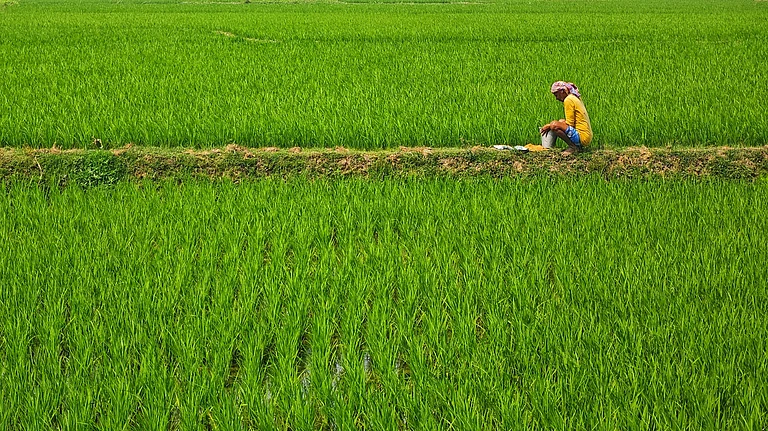The area allocated to monsoon-sown rice crops has increased 7.4% from a year earlier to 6.93 million hectares (17 million acres) as of July 4, according to Bloomberg.
Indian Farmers Boost Rice, Pulses Sowing Amid Normal Monsoon, Still Need $75 Bn for Climate Adaptation
Despite higher rice and pulses sowing amid good monsoon rains, Indian farmers face a $75 billion gap to adapt to climate change impacts
Farmers have reportedly planted pulses on 4.26 million hectares of land, surging 35% from a year earlier. Oilseeds planting has increased to 10.82 million hectares, up 14% from a year earlier.
Rains have been 15% above normal so far in the monsoon period that runs from June to September, the India Meteorological Department (IMD) told Bloomberg. Kharif Crops—typically sown during June-July and harvested in October-November—rely heavily on monsoon rains.
Overall sowing area was reported to be 11% higher than the same period last year, covering a total of 262.15 lakh hectares of June-end, according to data published by the Department of Agriculture and Farmers Welfare.
Sowing areas too have reportedly increased from last year’s figures for rice, pulses, coarse cereals, oilseeds and cotton despite the variability in monsoons and uneven distribution of rainfall, reported NDTV.
As a share of the normal area coverage, while about 16% of pulses are already sown, about a fourth of cereals and oilseeds have been sown so far. From a sowing perspective, monsoon performance in July is more important as nearly 80% of the sowing is completed by this period, said Gaura Sengupta, Chief Economist at IDFC First Bank. El Nino neutral conditions are expected to prevail throughout the monsoon season and are expected to aid outlook, reported NDTV.
Farmers Face Climate Costs
While monsoon brought with it some signs of positivity in terms of ramping up sowing activity, a segment of small-scare farmers in India are still struggling to deal with the climate shock.
Investments worth around $75 billion are required for small-scale farmers in India to adapt to the impact of climate change and bringing finance to rural areas is a critical challenge ahead for rural communities across the world and in India, President of the International Fund for Agricultural Development (IFAD) Alvaro Lario told PTI.
Lario shared that the three big questions for IFAD in India are, "how do we make agriculture more remunerative for farmers, how do we enhance productivity at the same time as we're tackling a lot of the climate shocks and how do we move from food security to nutrition security."
(With inputs from PTI.)

